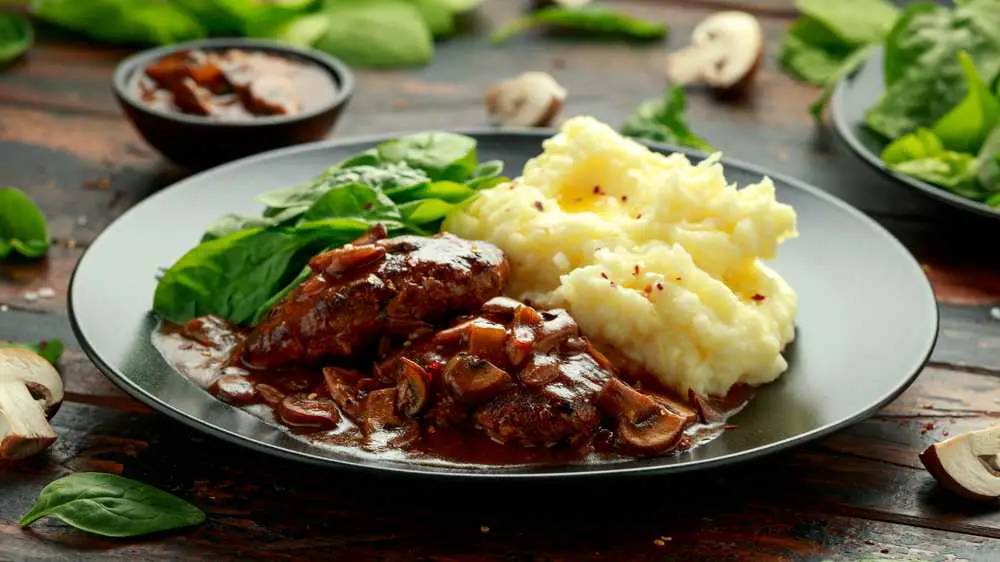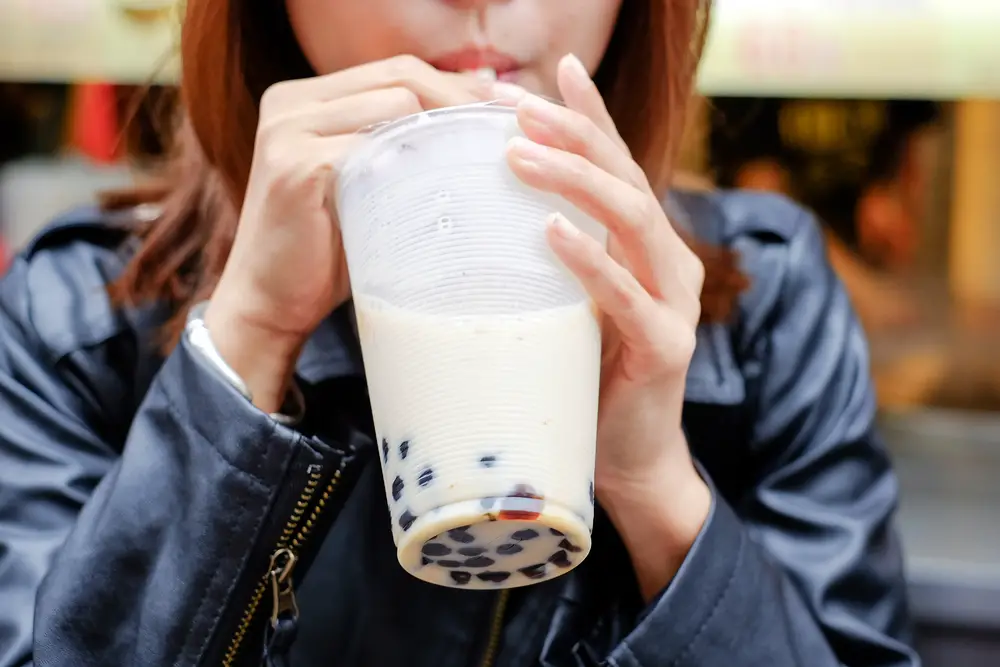Bubble tea, also known as boba tea, is a Taiwanese drink that has captivated taste buds across the globe with its unique combination of sweet, creamy flavors and chewy tapioca pearls.
Despite its worldwide popularity, many still wonder: why is it called “bubble tea”? The answer lies not only in its distinctive appearance but also in the origins of its preparation.
Historical Origins
Bubble tea originated in Taiwan during the early 1980s. The exact origins are often debated, but it is widely credited to have first been created in tea shops in Taichung. Most stories suggest that it was a creative experiment involving adding tapioca pearls to a traditional milk tea.
The Name: A Tale of Bubbles and Bobas
The term “bubble tea” can be somewhat misleading because the “bubbles” can refer to two different elements of the drink. The first and most obvious are the tapioca pearls. These pearls are made from the starch extracted from cassava root, giving them a chewy, gelatinous texture. When cooked, these pearls become glossy and bouncy, resembling little bubbles.
However, the “bubbles” in bubble tea actually refer to something entirely different. When bubble tea is made, the tea base—typically a mix of black, green, or oolong tea—is shaken with milk and flavorings, creating a frothy layer on top. This layer of frothy bubbles that appears after shaking gave rise to the name “bubble tea.” The act of shaking the tea is crucial not only to mix the ingredients thoroughly but also to introduce air into the liquid, creating a frothy texture that enhances the drinking experience.
Global Popularity and Variations
Since its inception, bubble tea has spread globally, with numerous variations emerging. In addition to tapioca pearls, other types of toppings can be added, such as jelly, fruit, and popping boba, which are filled with fruit-flavored liquid. The base tea can also vary, and the addition of milk or fruits can transform the flavor profile significantly.
Bubble tea shops often offer a customizable experience, where customers can choose their type of tea, sweetness level, and types of toppings. This customization, coupled with the unique textures and flavors, has helped bubble tea gain a dedicated following worldwide.
Cultural Impact
Bubble tea isn’t just a drink; it’s a cultural phenomenon that has inspired festivals, art, and even fashion. Its impact is seen in the numerous bubble tea cafes that have become social hubs, particularly among young people. The drink has also been a bridge in cultural exchange, introducing many to aspects of Taiwanese culture through a culinary experience.
Bubble tea’s intriguing name is a testament to its equally intriguing nature. From its frothy, shaken origins to the chewy pearls that many assume are the “bubbles,” the drink is a delightful blend of texture, flavor, and culture. As bubble tea continues to evolve and spread, its name remains a playful reminder of its unique characteristics and the joy it brings to people all around the world.
Innovations and Trends
As bubble tea has evolved, it has seen numerous innovations that keep the beverage fresh and exciting. From the inclusion of different types of boba, like crystal or agar boba, to the introduction of cheese tea—a topping made of whipped cheese with cream and salt—bubble tea continues to redefine itself. Some shops have even experimented with organic ingredients or vegan alternatives to make the drink accessible to a broader audience.
Health Considerations
With its rise in popularity, there has also been increased scrutiny regarding the health aspects of bubble tea. Traditionally, bubble tea can be high in sugars and calories, especially when sweetened condensed milk and syrups are used. In response, many shops now offer options to adjust the sugar levels, and some promote the use of natural sweeteners and fresh, organic ingredients to cater to health-conscious consumers.
Cultural Integration and Expansion
Bubble tea has not only been integrated into different cultures around the world, but it has also influenced dining experiences in diverse markets. In countries like the United States, bubble tea is often sold in Asian restaurants and specialty cafes, but it has also started appearing in more mainstream chains, signaling a broader acceptance and integration into the Western culinary scene.
Furthermore, bubble tea has become a cultural ambassador for Taiwan, promoting Taiwanese cuisine and culture globally. It is often one of the first Taiwanese foods that people try, leading them to explore more of what the culture has to offer.
The Future of Bubble Tea
Looking forward, the future of bubble tea looks bright. The drink continues to adapt to the tastes and dietary preferences of a global audience, and new innovations in bubble tea are likely to keep it relevant and exciting. The industry has started embracing more sustainable practices, such as using biodegradable straws and packaging, which may help mitigate some of the environmental concerns associated with disposable plastic use.
Moreover, as bubble tea becomes a staple in various cultures, its influence on local tea cultures is profound. It introduces a playful, experimental approach to tea, encouraging younger generations to embrace tea culture in a way that traditional teas might not have.
From its humble beginnings in Taiwan to becoming a global phenomenon, bubble tea has transcended its original “bubble” moniker to become a symbol of cultural fusion and culinary innovation. The drink continues to evolve, pushing the boundaries of what tea can be while providing a sweet, sometimes caffeinated respite in the busy lives of millions around the world. As it adapts to new trends and health guidelines, bubble tea remains a vibrant part of modern culinary culture, offering a unique blend of tradition and modernity in every sip.


















